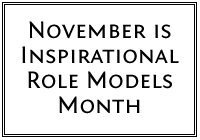 Quora.com printed the best advice for entrepreneurs, from entrepreneurs. This quote was one of the top three submissions that received the most votes from readers.
Tim Westergren, founder of Pandora, a popular music-streaming service:
Quora.com printed the best advice for entrepreneurs, from entrepreneurs. This quote was one of the top three submissions that received the most votes from readers.
Tim Westergren, founder of Pandora, a popular music-streaming service:
Learn public speaking. Of all the skills that an entrepreneur can have, I think the ability to convey an idea or opportunity, with confidence, eloquence and passion is the most universally useful skill. Whether you're pitching a group of
I couldn't agree more and I've been saying this for years. In 2007, I was quoted in a New York Times article, "Um, Uh, Like Call in the Speech Coach".
'Small business is leaving money on the table because it is overlooking one of the most powerful marketing skills: speech,' said Diane DiResta, a speech and communications coach in New York. 'Speech is the way a small business builds its brand, establishes expertise, gets free publicity and gets in front of its market.'”
And that's why I give webinars and speeches to entrepreneurs on Speak Powerfully, Sell More, How to Use Speaking To Grow Your Business. Speaking is the most cost effective and underutilized marketing strategy. I spoke in Tanzania as a result of giving two free presentations. (The client doesn't always buy the first time). A free speech at a National Conference led to business in Egypt. Speaking pays. Good presentation skills impact every aspect of business from getting the interview, making the sale, attracting funding, or running for office. It's the very essence of executive presence.
As leaders and executives, entrepreneurs cannot afford to avoid public speaking. Public speaking is the new game changer.



 Have you ever wondered why some leaders are more inspirational than others? Here's the secret. They speak from the inside out. Where most leaders speak about the WHAT and the HOW, leaders who inspire audiences with their message do one thing differently. They speak about the WHY.
Have you ever wondered why some leaders are more inspirational than others? Here's the secret. They speak from the inside out. Where most leaders speak about the WHAT and the HOW, leaders who inspire audiences with their message do one thing differently. They speak about the WHY.

















